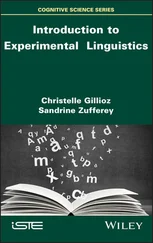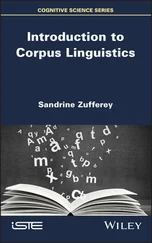Careful reflection shows that a grammar must contain more than just a lexicon and a syntax. One reason for this is based on the observation that many words change their phonetic form (i.e. the way they are pronounced) in connected
speech, such sound changes being determined by the nature of neighbouring
sounds within a word, phrase or sentence. These changes are effected by native speakers in a perfectly natural and unreflective way, suggesting that whatever principles determine them must be part of the relevant system of mental representation (i.e. grammar). We can illustrate what we mean here by considering examples of changes which result from the operation of regular phonological
processes. One such process is elision, whereby a sound in a particular position can be dropped and hence not pronounced. For instance, the ‘f’ in the word of (which is pronounced /v/) can be elided in colloquial speech before a word
beginning with a consonant (but not before a word beginning with a vowel):
hence we say ‘pint o’ milk’ (sometimes written pinta milk) eliding /v/ before the /m/ of the word milk, but ‘pint of ale’ (not ‘pint o’ ale’) where the /v/ can’t be elided because the word ale begins with a vowel. A second regular phonological
Introduction
5
process is assimilation, a process by which one sound takes on some or all the characteristics of a neighbouring sound. For example, in colloquial speech styles, the final ‘d’ of a word like bad is assimilated to the initial sound of an immediately following word beginning with a consonant: hence, bad boy is pronounced as if it were written bab boy and bad girl as if it were written bag girl (exercise 3).
The fact that there are regular phonological processes such as those briefly described above suggests that in addition to a lexicon and a syntactic component, a grammar must also contain a phonological component: since this determines
the phonetic form (= PF) of words in connected speech, it is also referred to as the PF component. Phonology, the study of sound systems and processes
affecting the way words are pronounced, forms the subject matter of part I of this book.
So far, then, we have proposed that a grammar of a language contains three
components, but it is easy to see that a fourth component must be added, as native speakers not only have the ability to form sentences, but also the ability to interpret (i.e. assign meaning to) them. Accordingly, a grammar of a language should also answer the question ‘How are the meanings of sentences determined?’
A commonsense answer would be that the meaning of a sentence is derived by
combining the meanings of the words which it contains. However, there’s clearly more involved than this, as we see from the fact that sentence (10) below is ambiguous (i.e. has more than one interpretation):
(10)
She loves me more than you
Specifically, (10) has the two interpretations paraphrased in (11a, b): (11)
a.
She loves me more than you love me
b.
She loves me more than she loves you
The ambiguity in (10) is not due to the meanings of the individual words in the sentence. In this respect, it contrasts with (12):
(12)
He has lost the match
In (12), the word match is itself ambiguous, referring either to a sporting encounter or a small piece of wood tipped with easily ignitable material, and this observation is sufficient to account for the fact that (12) also has two interpretations. But (10)
contains no such ambiguous word, and to understand the ambiguity here, we need to have some way of representing the logical (i.e. meaning) relations between the words in the sentence. The ambiguity of (10) resides in the relationship between the words you and loves; to get the interpretation in (11a), you must be seen as the logical subject of loves (representing the person giving love), whereas for (11b), it must function as the logical object of loves (representing the person receiving love). On the basis of such observations, we can say that a grammar must also contain a component which determines the logical form (= LF) of sentences in the language. For obvious reasons, this component is referred to as the LF component, and this is a topic which is discussed in section 23 of this book (exercise 4).
6
linguistics
Our discussion has led us to the conclusion that a grammar of a language
comprises (at least) four components: a lexicon, a syntactic component, a PF
component and an LF component. A major task for the linguist is to discover the nature of such grammars.
However, there is an additional concern for the linguist. Suppose grammars are produced for a variety of languages by specifying the components introduced
above. Naturally, we would expect these grammars to exhibit certain differences (a grammar of English will be different to a grammar of Japanese), but we might also discover that they have some properties in common. If these properties appear in grammars for a wide range of languages, standard scientific practice leads us to hypothesise that they are common to the grammars of all natural languages, and this means that an additional goal for the linguist is the development of a theory of Universal Grammar (UG). A great deal of contemporary linguistic theory can be viewed as testing hypotheses about UG on an ever-wider class of languages.
As described above, UG is viewed as emerging from the linguist’s study of
individual grammars, but there is a different way to introduce this concept which affords it a much more important and fundamental position in the work of
linguists. To appreciate this, we need to turn to the second of our questions, namely, ‘How do we acquire a grammar?’
Developmental linguistics
Readers familiar with small children will know that they generally
produce their first recognisable word (e.g. Dada or Mama) round about their first birthday; from then until the age of about one year, six months, children’s speech consists largely of single words spoken in isolation (e.g. a child wanting an apple will typically say ‘Apple’). At this point, children start to form elementary phrases and sentences, so that a child wanting an apple at this stage might say ‘Want apple’. From then on, we see a rapid growth in children’s grammatical development, so that by the age of two years, six months, most children are able to produce adult-like sentences such as ‘Can I have an apple?’
From this rough characterisation of development, a number of tasks emerge for the developmental linguist. Firstly, it is necessary to describe the child’s development in terms of a sequence of grammars. After all, we know that children
become adults, and we are supposing that, as adults, they are native speakers who have access to a mentally represented grammar. The natural assumption is that they move towards this grammar through a sequence of ‘incomplete’ or ‘imma-ture’ grammars. Secondly, it is important to try to explain how it is that after a period of a year and a half in which there is no obvious sign of children being able to form sentences, between one-and-a-half and two-and-a-half years of age there is a ‘spurt’ as children start to form more and more complex sentences, and a phenomenal growth in children’s grammatical development. This uniformity
and (once the ‘spurt’ has started) rapidity in the pattern of children’s linguistic
Introduction
7
development are central facts which a theory of language acquisition must seek to explain. But how?
Chomsky maintains that the most plausible explanation for the uniformity and rapidity of first language acquisition is to posit that the course of acquisition is determined by a biologically endowed innate language faculty (or language
Читать дальше
![Andrew Radford Linguistics An Introduction [Second Edition] обложка книги](/books/397851/andrew-radford-linguistics-an-introduction-second-cover.webp)











